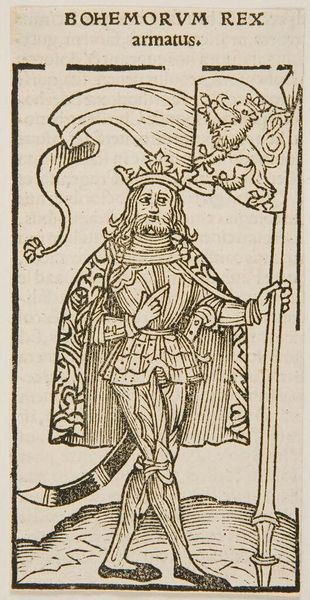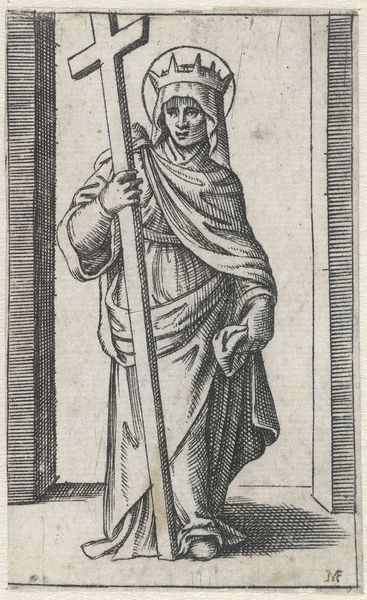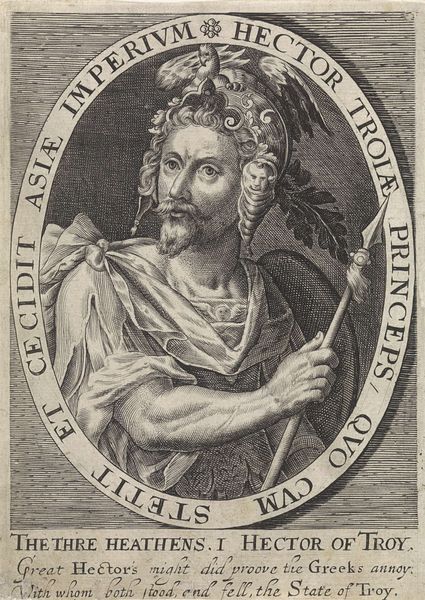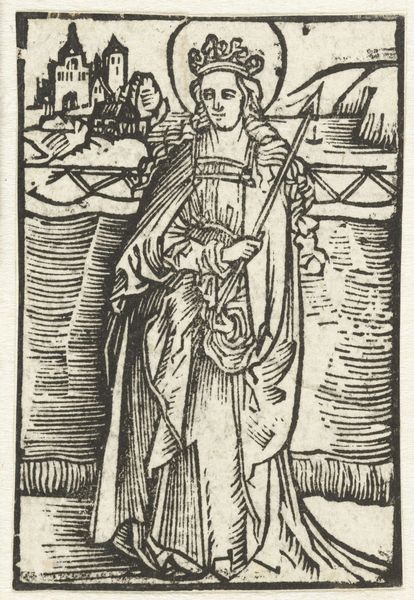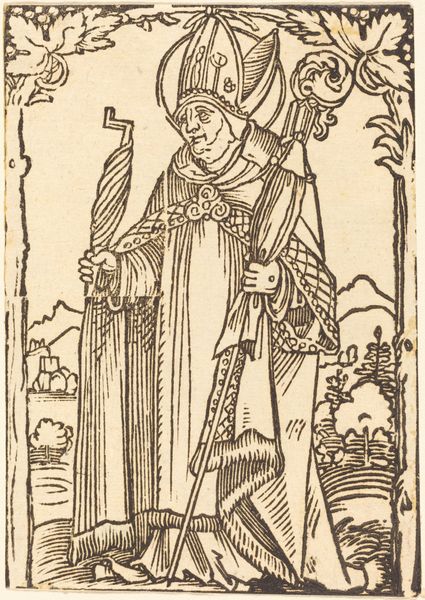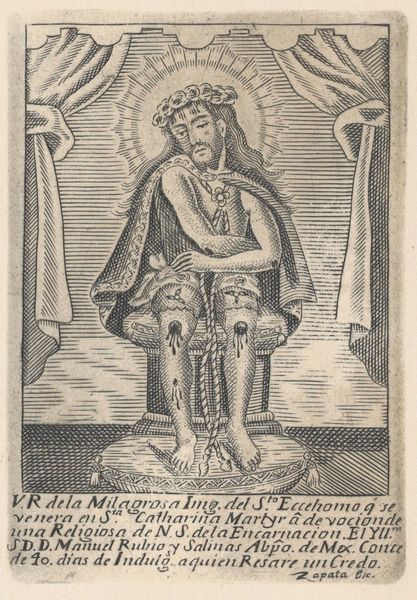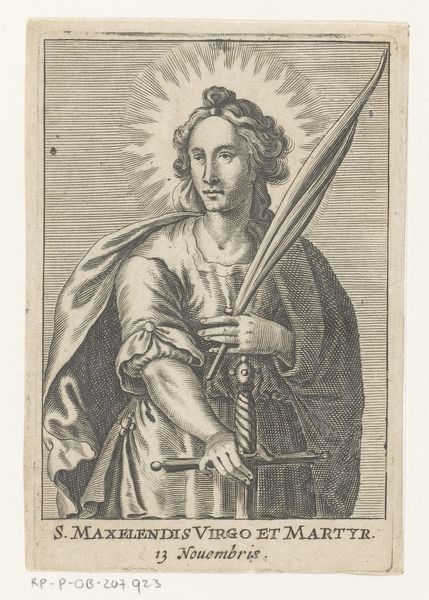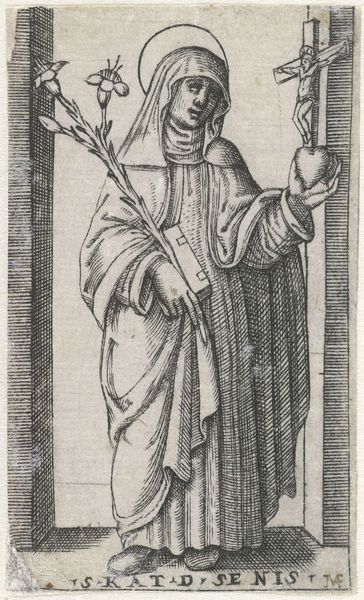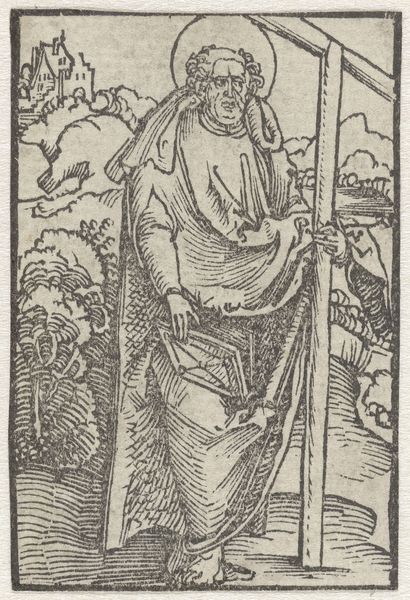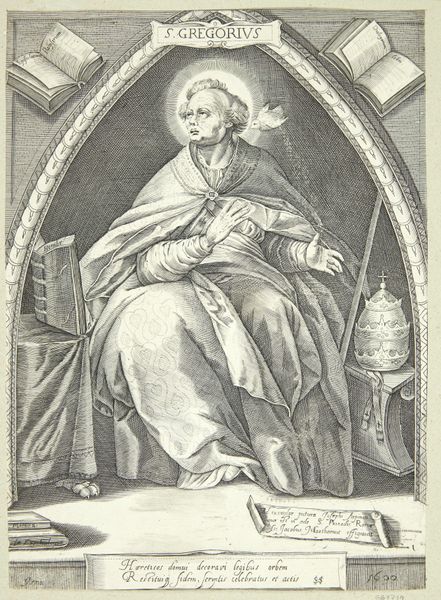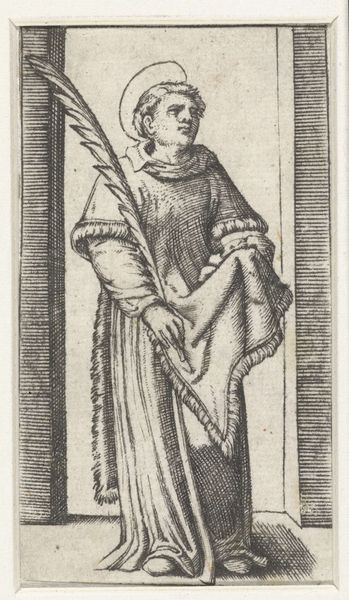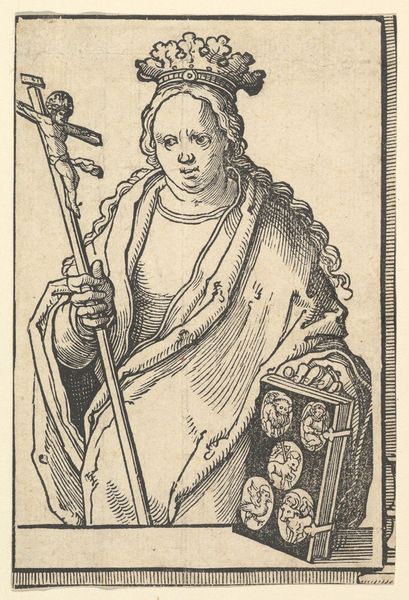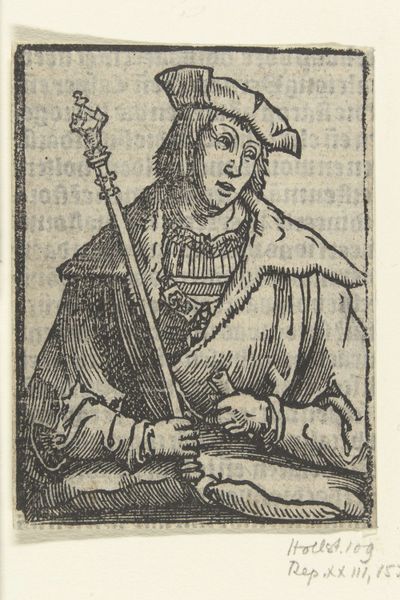
drawing, print, ink, engraving
#
portrait
#
drawing
#
medieval
#
pen drawing
# print
#
pen illustration
#
pen sketch
#
figuration
#
ink
#
history-painting
#
engraving
Dimensions: Sheet: 3 9/16 × 2 7/16 in. (9 × 6.2 cm)
Copyright: Public Domain
Curator: Here we have an engraving, probably from the 19th century given the dating "19-19" provided, titled "Saint Hippolytus of Rome, martyr," currently housed at the Metropolitan Museum of Art. It depicts a figure, presumably the saint, in what looks like a rather stylized medieval style. What's your immediate read on it? Editor: My first impression is one of starkness, almost severe. The black ink on what I presume is paper, the rigid lines... it feels very… binary, very structured. And there is an interesting surface tension produced by all the linear structures, hatchings, and cross-hatchings of the figure of Saint Hippolytus. Curator: Yes, the artist’s focus seems to be less on naturalistic representation and more on conveying certain visual cues. For example, the scales on his armor have an abstract appeal in of themselves. He holds both a palm frond, symbol of martyrdom, and what seems to be a weapon. The cross-hatching gives an illusion of three-dimensionality, despite the clear graphic quality. And the frame adds complexity in relation to the portrayed figure, thus enhancing the surface tension I just mentioned. Editor: What’s intriguing to me is how the image reflects shifting cultural attitudes towards sainthood and martyrdom over time. During the medieval era, the Church actively promoted its ideological perspectives through visual productions, establishing very rigid and very clear parameters in how to present a religious figure. We see that here through Hippolytus' garments and accessories. Even his geometrical halo is more like an "icon" than an aura. Curator: True, the visual language speaks volumes. And it’s quite interesting how this rather crude engraving presents him not only as a holy figure, but also as a warrior of God. Editor: Exactly! So, in a context of profound historical uncertainty, artistic expressions are meant to produce not just simple depictions of human life but instead to stage political, ethical, and social claims through art. I suppose the rigidness I noticed in the structure comes from a place of wanting to project these strong social and political positions. Curator: A fitting analysis. It reveals the multifaceted relationship between religious narratives, artistic practices, and broader societal frameworks. Editor: Indeed, this exercise reminds me that sometimes, by really understanding art's cultural and political function, we also unlock fresh perspectives on our history as well.
Comments
No comments
Be the first to comment and join the conversation on the ultimate creative platform.
